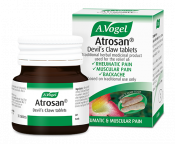Why are my muscles sore after exercising?
After exercising it is common for the muscles to become sore or stiff. This usually occurs straight after a workout but for some people, the discomfort can arise as much as two days later! Problems like this usually occur when you take up a new activity where muscles that haven’t previously had much action are used strenuously however, increasing the duration or intensity of your usual workout can also cause discomfort to pop up later on.
This issue is known as delayed onset muscle soreness, or DOMS for short.1 Here the muscle fibres are damaged to a very small extent during exercise, hence the arrival of sore arms after a weightlifting session or sore legs after a class like Zumba.
Muscle soreness after exercising may discourage some from engaging in more physical activity in the future – surely any pain suggests that something is wrong? However, it is important that you aren’t discouraged at this stage because this kind of stiffness and soreness is completely normal and may actually indicate that your fitness is getting better! Also, within a few days any soreness should die down (if it doesn’t you should get it checked out) and you’ll be back to full fitness, ready for another workout!
1 - Stretch!
Any athlete or fitness guru will tell you how important it is to stretch both before and after exercising – over on our Get Active Hub it’s a topic we discuss all the time! Stretching can help to prevent injury to the muscles and joints, it keeps us flexible and it boosts circulation. So, stretching prepares your muscles for a workout however, it could also help them (and you) to wind down once the workout is over as it is quite a relaxing activity.
Some people forgo stretches before and after a workout because they aren’t sure which is best for their chosen sport. Also, some people don’t know how to go about stretching in the first place and so they too chose to avoid it. To get you clued up on stretching though, I’ve listed a few relevant blogs from our very own Get Active Hub!
- A simple warm up routine for any type of exercise
- An easy 10 minute workout for beginners
- Stretches for runners

2 - Replace lost minerals
Exercise takes its toll on our energy levels and our muscles but also our stores of essential vitamins and minerals. As a result, it is important to tend to all of these things after any physical exercise, be it a short jog or a more intense spin class at your local gym.
Our Balance Mineral Drink can be quite helpful in this regard as it contains magnesium, zinc, potassium, calcium and vitamin D which have a whole range of post-workout benefits. Magnesium for example, contributes to normal muscle function (goodbye DOMS!) but it also helps fight tiredness and fatigue which usually arise after a stint of physical activity. Also, vitamin D and calcium are beneficial for bone and muscle function so these are important nutrients to top up after exercising.
That’s not all though, Balance has a natural strawberry flavour so not only does it make the perfect post workout drink, it also tastes great!
3 – Keep hydrated
Yes, yes, we all know how important it is to drink lots of water when exercising – we risk becoming dehydrated otherwise. However, did you know that staying hydrated could help those aching muscles too?
A study published in the Journal of Athletic Training in 2005 found that dehydration can increase the severity of DOMS and in some people this alone was enough to cause pain too.2 So, what’s the answer? Well, simply drink lots of plain still water before, during and after that workout!
4 – Keep up some gentle activity
If your muscles are feeling a little tender the day after a workout it can be tempting to put your feet up and relax. However, although it is important to give your body time to recover, some gentle exercise could actually help to leave any soreness in the muscles.
The key here is to keep activity to a moderate level though, so don’t just repeat the workout that’s caused you discomfort in the first place! Instead, a walk, swim or a short cycle are all excellent options.
5 – Apply heat
After a stint of exercise it is best to apply heat to tense muscles rather than ice. That’s because a warm bath, a hot water bottle or a heat pad will soothe and relax the troublesome areas, whilst also providing some natural pain relief. Ice on the other hand, is more beneficial when there has been an injury (such as a pulled muscle or sprain) that causes inflammation, swelling, bruising or redness.
You can read more on this topic in our blog ‘Heat or ice: which is best for your pain or injury?’
6 – Apply Atrogel
Arnica flowers have traditionally been used to ease achy muscles and joints, whether it’s as a result of injury or something more short-term like DOMS.
Although there are lots of arnica products to choose from, Atrogel stands out because it is made from freshly harvested Arnica meaning the flowers do not lose their beneficial properties during the production process.
So, if you need a helping hand to tend to sore muscles, this is the product to try!
7 – Book a massage
Research shows that having a massage immediately after a workout reduces the intensity of muscle soreness in the days after exercise.3 So, if you’ve got an old spa voucher to use up or you’ve found a deal online, the best time to go is definitely after you’ve been exercising!

How to prevent sore muscles in future workouts
- Increase the length of your workout slowly – instead of jumping straight into a 30 minute run, do ten minutes running, 10 minutes walking and gradually build up the time spent doing each until you’ve achieved the distance you want
- Stretch before a workout – this will warm up your muscles and should help to prevent injury or soreness later on
- Incorporate gentle exercises into your routine – the likes of swimming, cycling and walking will stretch your muscles more meaning that when you do a more intense workout, you’ll be less likely to get DOMS. Also, it’s important to remember that you don’t need to do a fast-paced, vigorous form of exercise for it to make a difference to your overall health and fitness levels!
- When your muscles are sore change your workout - next time you go to exercise focus on an area of your body that isn’t so painful as this will give your muscles time to recover.
References
1 https://www.nhs.uk/live-well/exercise/pain-after-exercise/#how-can-i-prevent-doms







 Looking for a treatment to relieve pain in conditions such as muscle aches or pains, stiffness, rheumatic pain or after sporting injuries?
Looking for a treatment to relieve pain in conditions such as muscle aches or pains, stiffness, rheumatic pain or after sporting injuries?

